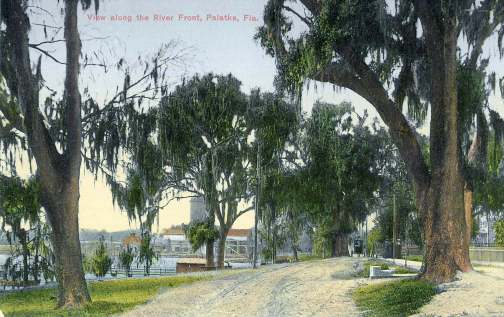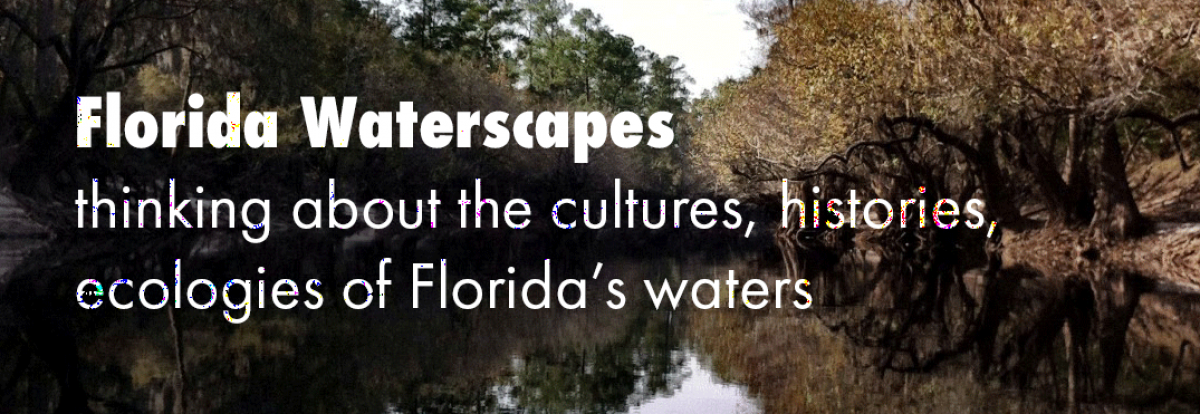
On January 21, 2017, the Matheson History Museum welcomed visitors to River of Dreams: The St. Johns River and its Springs. This exhibit took months of planning, fieldwork, and meetings (and several heroic late nights by UF Museum Studies personnel), but seeing the images and the silhouette of the river installed on the museum’s walls made it all worthwhile.

As I have fallen in love with Florida’s rivers, lakes, and springs, I have become curious about the people whose lives are entwined with our waters—then and now. A research project on the St. Johns River gave me an opportunity to learn more about this riverine ecosystem and its inhabitants. And, of course, this research afforded me more time on the water and in the water.


From the pre-Columbian era, indigenous peoples, explorers, artists, and fishers have drawn sustenance and inspiration from the St. Johns River, named an America’s Heritage River in 1998. Similarly, the crystal clear springs that erupt from the Floridan Aquifer and flow into the St. Johns have been a source of pride for residents of north central Florida, past and present. Continuous waves of settlements along the St. Johns River and its springs—from Native American mounds to contemporary fish camps—remind us that rivers like the St. Johns once served as America’s highways and illustrate how humans have lived with the river’s ebbs and flows and defined what it means to call north central Florida home.

In particular, I wanted to explore the complicated relationships between people and places and the diverse ways that people express their care for their ecosystems. For example, how do different groups understand, articulate, and, sometimes, deny environmental concerns? Today, the St. Johns and its springs face challenges that range from agricultural and industrial run-off to sea-level rise and threaten the lives and livelihoods of everyone in the river’s 310-square-mile watershed, from its headwaters near Vero Beach to Jacksonville. In 1947, Marjory Stoneman Douglas explained how Florida’s unique limestone geology is like a limestone spoon that maintains the fragile balance of holding our fresh water apart from saltwater. This balance is threatened by projected sea-level rise and increased freshwater consumption, which alters the river, its flora and fauna, and riverine cultures.
Mainstream environmental groups like the Sierra Club and Nature Conservancy are working to address these challenges, and their efforts tend to receive media coverage because water concerns are some of the most hotly contested issues in contemporary Florida. Other groups—few of whom would identify as environmentalists—are also working to sustain their river-based lives and livelihoods. For example, rallies to save rivers and springs draw fishers, a burgeoning kayaking industry, other river- and springs-based small businesses, and people with long memories of life on the river who represent what I call Old Florida environmentalism. While many of these Old Florida environmentalists might not identify with the broader environmental movement, they care deeply about their home, the St. Johns River and their springs. As I have attended river rallies and spoken to many people, I have learned that many of us share concerns about the St. Johns River, its springs, and our water supply and wonder how we will adapt to emerging issues, even if we do not use the same language to express our concerns.

River of Dreams: A Journey through Time and Space
My journey began in the St. Johns River’s headwaters near Vero Beach. With friend and photographer Anne Ledbetter, we visited Fort Drum Marsh and Blue Cypress Lake, what most people designate as the  river’s headwaters (St. Johns Headwaters: Finding Wildness in an Engineered Waterscape). We followed the river’s northerly course, visiting sites to better understand the contemporary and historical riverine cultures and the problems they face. In fish camps and other sites, we saw the complicated and often conflicting attitudes regarding the river and environmental change. Many people living and working along the St. Johns River have long family histories and deep emotional connections with the river. While they care for the river and derive income through river-based business, many of these Old Florida environmentalists deny climate change and express their care for the river using terms such as “creation care” rather than “environmentalism.” Fish camps, for example, are small fishing-camp resorts or restaurants along rivers and lakes and are considered part of the pre-Disney Old Florida.
river’s headwaters (St. Johns Headwaters: Finding Wildness in an Engineered Waterscape). We followed the river’s northerly course, visiting sites to better understand the contemporary and historical riverine cultures and the problems they face. In fish camps and other sites, we saw the complicated and often conflicting attitudes regarding the river and environmental change. Many people living and working along the St. Johns River have long family histories and deep emotional connections with the river. While they care for the river and derive income through river-based business, many of these Old Florida environmentalists deny climate change and express their care for the river using terms such as “creation care” rather than “environmentalism.” Fish camps, for example, are small fishing-camp resorts or restaurants along rivers and lakes and are considered part of the pre-Disney Old Florida.
Our journey through time and space along the ‘River of Dreams’ prompts us to consider how emerging challenges will shape these ways of life. Subsequent stops will show how early snowbirds such as writer Harriet Beecher Stowe cruised the St. Johns, the Highway A1A of its day, and how contemporary fish camps offer a glimpse of Old Florida. Further north, the Kinsgley Plantation became home to scores of enslaved Africans. Finally, the St. Johns River flows to the sea, carrying waste away from those upstream. River of Dreams illustrates the richness of human life along the St. Johns and that we can choose how we interact with this river. Shared concerns about the river cutting across cultural, racial, and class lines suggests opportunities for resilience and adapting to climate change, pollution, and over-pumping. More important, perhaps we will see that diverse groups can find common ground about their riverine home.

Visit the River of Dreams at the Matheson History Museum, 513 E University Avenue, Gainesville, FL 32601 Phone: (352) 378-2280
Hours: 11:00 a.m. – 4:00 p.m., Tuesday – Saturday
The Matheson will offer related programming from now through June, ranging from talks at the museum to paddling tours guided by Lars Anderson at Adventure Outpost. Visit the Matheson’s events page for details.
This exhibition emerged from the research of Dr. Whitney Sanford, Florence Turcotte, and students in the UF Religion Department, and was made possible by the generous support of Visit Gainesville; the State of Florida, Division of Cultural Affairs; and the Center for the Humanities and the Public Sphere at the University of Florida.
Thank you to our partners the Special & Area Studies Collections of the George A. Smathers Libraries at UF, UF Religion Department, and the UF Museum Studies Program, as well as the UF Florida Puerto Rico Digital Newspaper Project, the Laboratory of Southeastern Archeology, Department of Anthropology at UF and the National Park Service, Timucuan Ecological and Historic Preserve.
Curator: Briley Rasmussen
Associate Curators: Alexis Schuman and Lauren O’Neill
Guest curators: A. Whitney Sanford, Florence Turcotte
Assisted by: Peggy Macdonald, Sarah ‘Moxy’ Mocyzgemba, Amanda M. Nichols, Brian K. Szymborski
Exhibition Photographer: Anne Ledbetter
Mural Artists: Gillian Fazio and Laura North
Graphic Designer: Brianna Ostrowski




